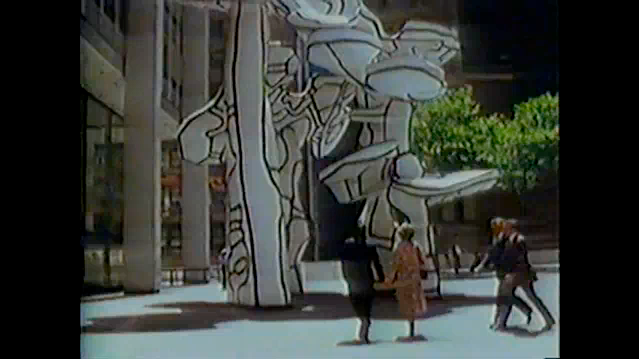movie review: The Social Life of Small Urban Spaces
2024-09-21
summary: i review a documentary film about public plazas in New York City.
changelog
- 2024-10-15: styling.

The Social Life of Small Urban Spaces
1980 • directed by William H. Whyte
Watch it: archive.org • Reviews: imdb • letterboxd
Recently, I found myself early to an appointment in midtown Manhattan, so I decided to walk around for a bit. Needless to say, the glass skyscrapers of Midtown cast a very unaccommodating backdrop on the streetscape below. Sometimes I would find street corners with small plazas and sitting areas, but for some reason they would provide little respite from the wide roads, the buzzing traffic, and the cold hard pavement.
Perhaps these designers would benefit from watching The Social Life of Small Urban Spaces, a short documentary that was produced by the Municipal Art Society of New York in the 80s as part of a research study of why some urban spaces “work” and some just… don’t. (In addition to this film, this study also produced a book and informed New York City’s design guidelines on public squares.) Whyte and his research staff used a data-driven approach: they collected an exhaustive amount of data by mapping out and enumerating where people hang out, how they hang out, and when they hang out. They collected this data primarily in New York, but they also made sure to visit Chicago, Cincinnati, Los Angeles, Houston, Minneapolis, Toronto, and even Venice. The movie even begins this way, with a camera pointed toward Seagram Plaza but at a distance, presenting an overview of all the plazagoers.
But the researchers quickly zoom in, noting that no amount of data could ever model the “how”. You can plot out where people congregated on a map, but nothing beats taking the a camera to see with your own eyes the diversity of activities occurring within. Whyte’s witty commentary narrates the intricate and spontaneous interactions that occur along plazas: chance encounters, gawkers, executives taking impromptu meetings, and people who just stand around. The commentary is definitely a product of its time but is mostly unjudgmental of its subjects, if not sometimes dreadfully wry. It is in this observation of the mundane pthat the film draws its most powerful conclusions, ones we take for granted today. For example, people tend to sit where there are seats: on stairs, on planters, on art installations, on the floor. People-watching is the most common activity observed: in effect, the mere presence of people in plazas draws in more people. The interplay between light, nature, water, and geometry are examined, with the conclusion that every successful public space has some combination of all, from the modern plazas of Midtown to a neighborhood street in East Harlem. Whyte also pulls no punches in criticizing urban design that privileges the automobile and obliterates street life in the process. You can feel it too: suddenly, there is nothing to comment on other than the lack of life.
I’ve noticed an increased interest in urbanism among my peers and the internet broadly. (Were this made today, Whyte might declare Midtown to be a city of “stroads” and might bemoan the lack of seating in Moynihan Train Hall.) People pine for their cities to resemble western European town centres. (Whyte was probably the first to make the observation that denizens of LA pay top dollar to enjoy a fascimile of urbanism in Disneyland, long before any Twitter urbanist was even born!) But as this film shows, public spaces don’t need to look like Venice to draw people in or to be inviting.
I was captivated by this film, even though all it set out to do was document the mundane. It reminded me of how exciting public life is inherently, the joy of just having a bunch of people gathered in one space for no reason than to just hang out. I saw this in an independent theater as part of a series of films selected by documentarian/comedian John Wilson (How To With John Wilson is in its final season on HBO, is streaming on Max, and I highly recommend it too: John clearly drew a lot of inspiration from this film!) No matter if you’re interested in urbanism or just a slice of life, it’s worth the watch.